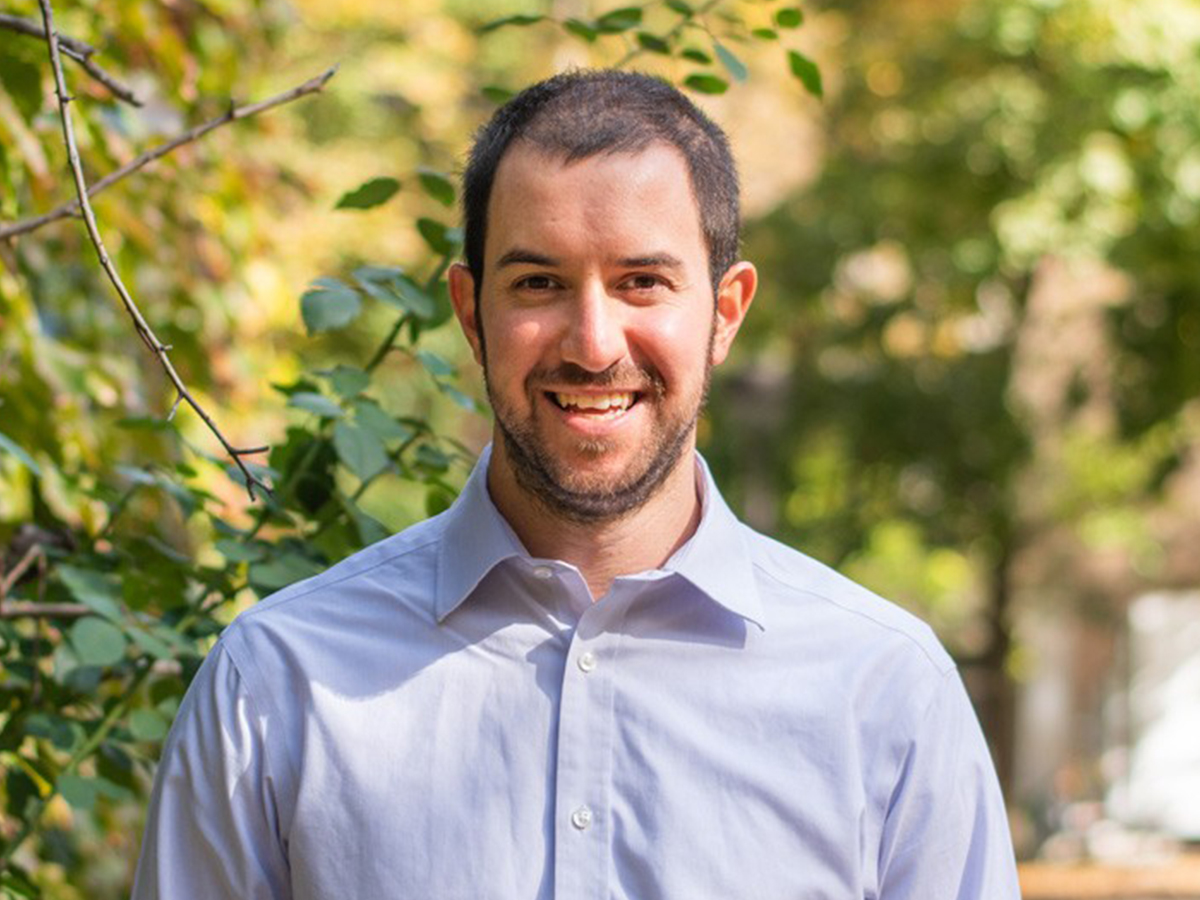Untangling how cell health affects aging and age-related diseases

Faculty of Science professor Aidan Brown will use his prestigious NSERC Alliance International Collaboration grant to further research into the mechanics of cellular function and brain health.
Acting as power generators and present in nearly all types of human cells, mitochondria are vital to our survival. Using proteins, mitochondria create energy from food molecules and are essential in driving cellular function and our biological processes, such as movement and metabolism. Science has shown that the aging process changes mitochondria’s size, shape and overall function. These changes are associated with the development of age-related neurodegenerative diseases, such as Alzheimer’s, Parkinson’s and Huntington’s.
In his recently published paper in Nature Communications, Toronto Metropolitan University (TMU) physics professor Aidan Brown and co-researchers demonstrate a connection between the size of a cell’s mitochondria and the amount of critical protein it receives. The research team found that protein distribution to smaller or fragmented mitochondria is often uneven and that a decline in mitochondrial function can result if this condition is sustained.
“Many studies link mitochondrial structure to cell dysfunction and disease, but we wanted to figure out how much the structure impacts this protein imbalance and what other factors might be involved,” said professor Brown. This research provides the framework for a clearer understanding of the negative impact of mitochondrial fragmentation on the physiology of cells in aging and disease. The outcomes of this research could lead to new drugs or treatments that prevent or delay age-related diseases.
Using physics and biochemistry to understand protein delivery
To build on this research, professor Brown is collaborating with biochemists from the University of California, San Diego, to better understand changes in protein levels. Professor Brown’s team, supported by an Alliance International Collaboration grant from the Natural Sciences and Engineering Research Council of Canada (NSERC), is taking patterns identified by the biochemists and using math and computer simulations to develop a new method for calculating and predicting how proteins are delivered to mitochondria.
“We want to understand how cells, which don't have a brain or a control center, manage to send the right proteins to mitochondria and not somewhere else,” said professor Brown. This interdisciplinary research aims to provide new insights into the link between mitochondrial health and aging.
“I’m delighted to congratulate professor Brown on securing funding that will help answer pressing questions around aging and age-related diseases,” said Steven N. Liss, vice-president, research and innovation at TMU. “This international collaboration will support further essential research into the mechanics of cellular function and brain health.”
Related stories: Math professor first TMU researcher to secure international collaboration grant